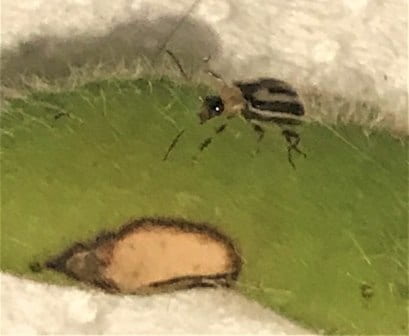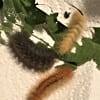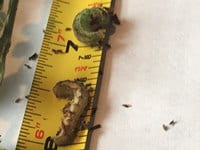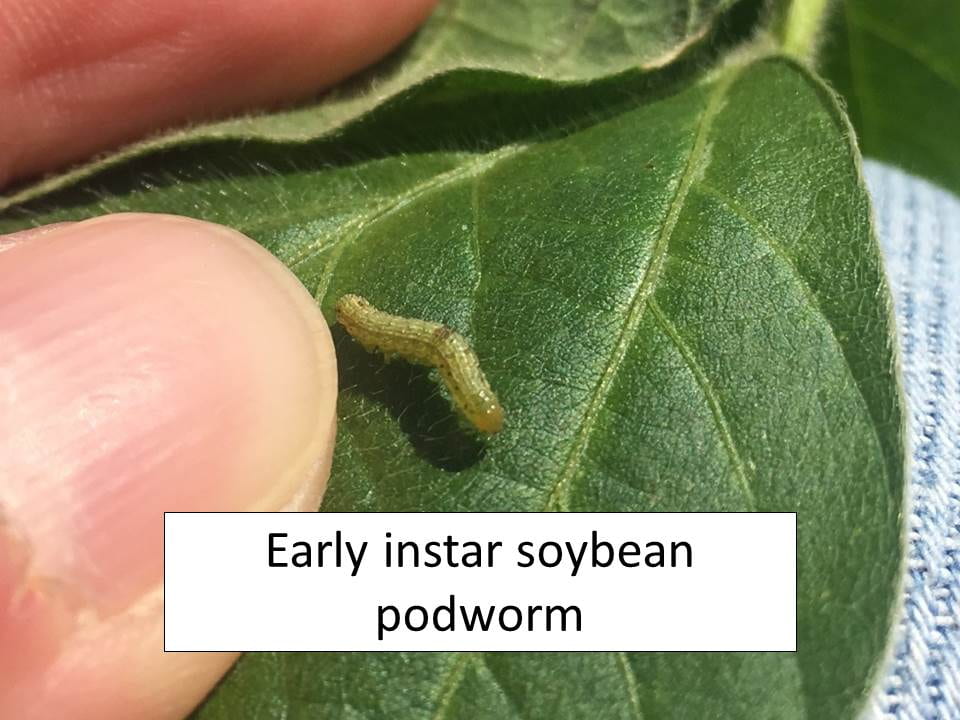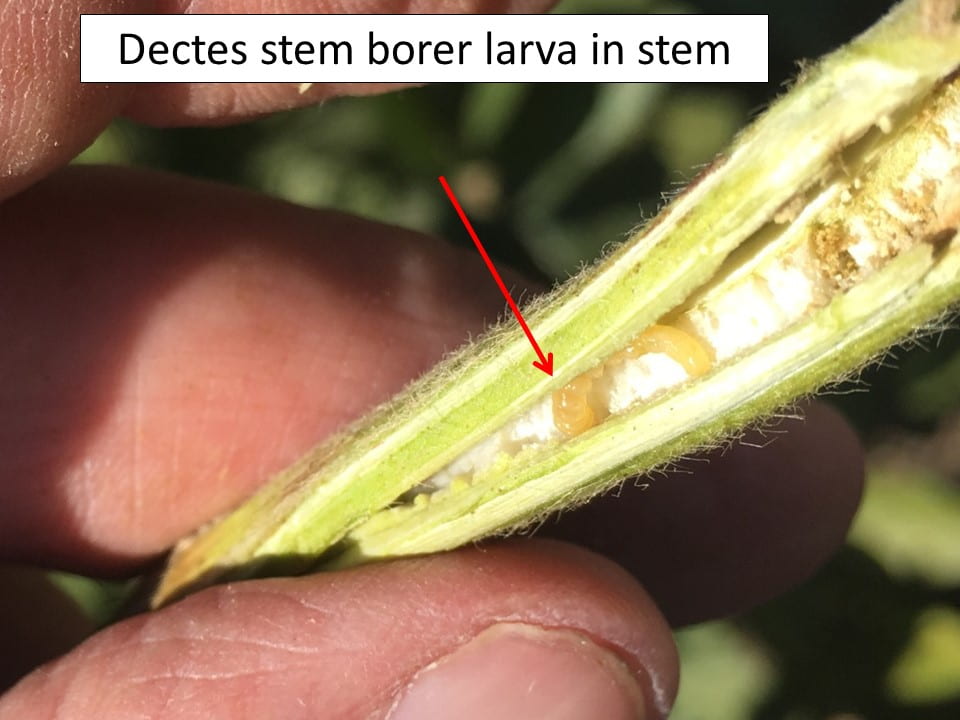–by Dr. Jeff Whitworth
The usual soybean defoliators, i.e., thistle caterpillars, garden webworms, green cloverworms, etc. have just started feeding again as small larvae. However, soybeans should have enough foliage, and the growing conditions are good enough, that this feeding should be negligible. Please note, Ms. Rene Hessel, a soybean researcher for KSU, and a soybean aphid detector extraordinaire, reported finding the first soybean aphids in Riley Co. on 7 August (see pic). Soybean aphids have migrated into Kansas every year since 2002, however, there has only been a couple years in that time that conditions were conducive enough to allow the aphid populations to build up to treatable levels. Most conventionally planted soybeans are in the early reproductive stages throughout south central and north central Kansas, so these aphids warrant periodic monitoring.
Also, just FYI. There seems to be a healthy number of stinkbugs (see pic) in most soybean fields at the present time. Remember, when pods are filling, the beans are vulnerable to both “podworms” and these stinkbugs.

Soybean aphid (photo by Rene Hessel)
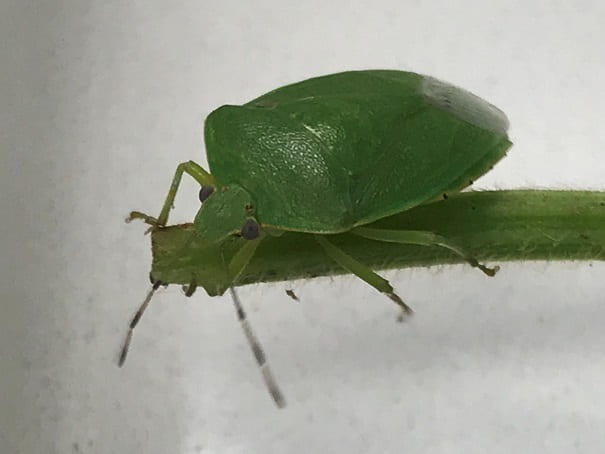
Adult Green Stinkbug

